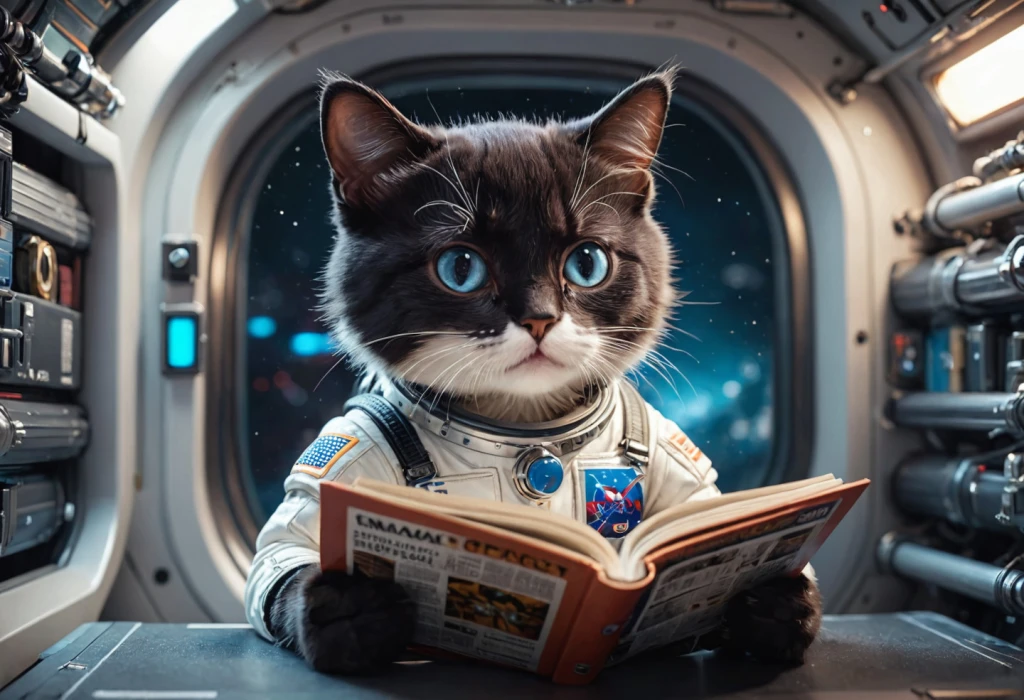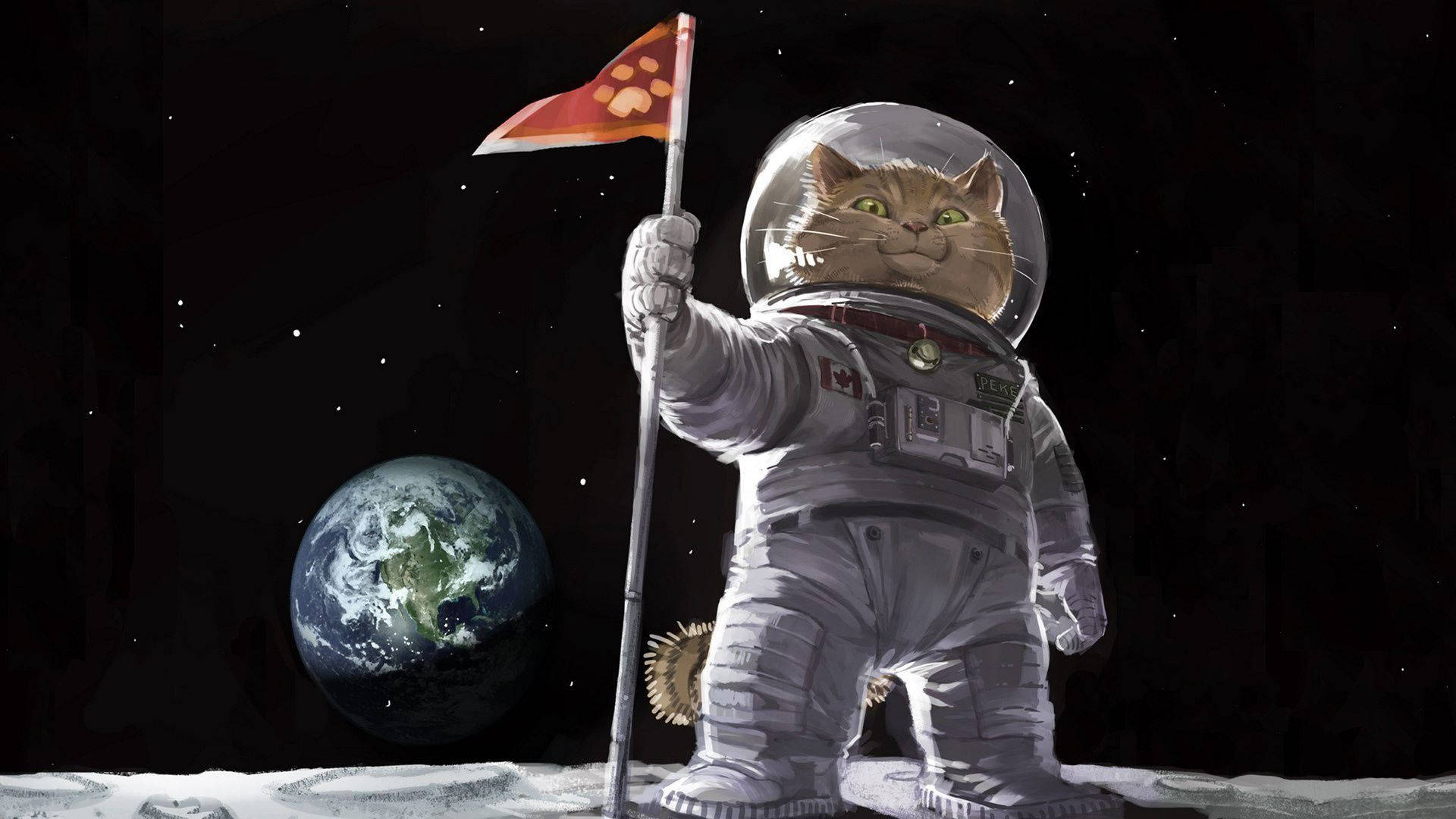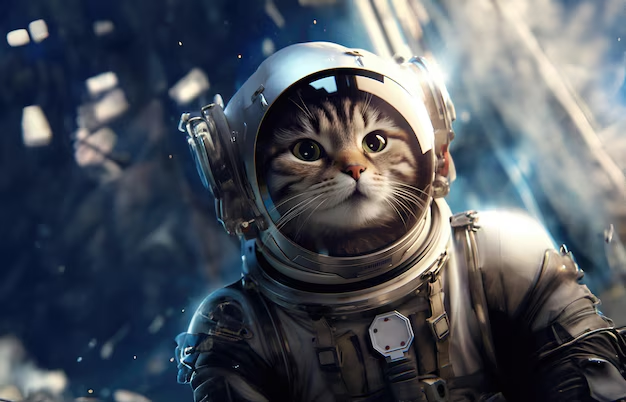Blog
Discovering the Life of an Astronaut Cat
The world has always been captivated by the idea of space exploration, with the allure of distant galaxies and the unknown drawing humanity ever forward. But what if we told you that there was a furry little astronaut among us? Enter the Astronaut Cat, a charming concept that blends the mystery of outer space with the everyday whimsy of our feline friends. In this article, we will explore the imaginatively profound life of an astronaut cat, delving into how such a creature would experience the cosmos, adapt to extraterrestrial environments, and inspire dreams of adventure in both humans and animals alike.
The Journey Begins: A Cat’s Perspective on Space
Imagine for a moment what it would be like to view Earth from the confines of a spacecraft through the eyes of a cat. The initial voyage would undoubtedly be overwhelming, filled with curiosity and a sense of bewilderment.
>>> Buy now: Astronaut Cat 3d All Over Print Hoodie, Zip-up Hoodie
Feline Curiosity Takes Flight
Cats are known for their inquisitive nature. Just as they investigate every nook and cranny of their homes, an Astronaut Cat would likely approach the spacecraft with the same level of curiosity.
In the cramped quarters of a spaceship, the excitement of discovering new smells, sounds, and textures would be palpable. With wide eyes and twitching whiskers, each flicker of light or mechanical hum would invite explorations. The cat’s ability to adapt quickly could turn even the most mundane objects—the control panel, the window to the stars—into sources of fascination.
Moreover, spending weeks floating in zero gravity would require some creativity in play. Imagine an Astronaut Cat batting around floating balls of yarn, chasing after them in slow-motion, and leaping awkwardly with a grace only cats possess. This whimsical playfulness would highlight the unique way cats perceive their environment, transforming the serious task of space travel into a delightful adventure.
Adapting to Microgravity
Microgravity poses unique challenges for any living creature, including our astronaut feline. Unlike humans, who can adapt to changes through rigorous training, cats rely on their innate instincts and flexibility to thrive.
In microgravity, the Astronaut Cat would need to learn how to navigate its surroundings without solid ground beneath its paws. Cats are natural jumpers; however, in a weightless environment, jumping takes on a whole new meaning. Instead of bounding off the ground, they might float into the air, only to slowly drift back down—a phenomenon that could lead to amusing moments.
Additionally, the Astronaut Cat would have to become skilled at using its claws in unconventional ways. Rather than relying solely on them for climbing, the cat would adapt by using its claws to grasp surfaces and stabilize itself while floating. This change in behavior exemplifies resilience and adaptability, showcasing the remarkable capacity of animals to adjust to new environments.
The Challenges of Eating and Sleeping
One of the more practical considerations for our Astronaut Cat would be how to eat and sleep in space. Without the familiar comforts of home, feeding routines would need to be reimagined.
Special food dispensers could cater to the dietary needs of cats, releasing small portions of food that would float in front of the feline. Watching an Astronaut Cat chase these morsels through the air would be both entertaining and heartwarming.
Sleep, too, would present challenges. Cats are notorious for their love of naps, often curling up in cozy corners to recharge. In space, however, finding a secure place to rest would be essential. An Astronaut Cat may need to find a snug spot within the spacecraft—perhaps nestled between wires or inside a fabric hammock designed for safety.
Through these experiences, we gain valuable insights into how creatures can adapt their daily habits to survive, thrive, and even enjoy life beyond Earth.
The Galactic Playground: Exploring Other Planets
As our fictitious Astronaut Cat travels further into the universe, the idea of exploring other planets becomes irresistibly exciting. Each new world presents its unique challenges and discoveries.
Encountering Alien Environments
Every planet is different, each with its atmosphere, climate, and gravitational pull. Imagine the thrill of stepping onto a new terrain, from the rocky surfaces of Mars to the ice-covered plains of Europa.
The Astronaut Cat would need to adapt its movements according to the conditions it finds. On a planet with higher gravity, each leap would be more laborious, and the cat would have to conserve energy, possibly changing its hunting techniques to suit the environment. Conversely, on a low-gravity world, the cat might find itself bounding high into the air, experiencing a sense of freedom unlike anything it has felt before.
Exploration wouldn’t just be physical, though. Alongside the visual wonders of alien landscapes, the cat’s heightened senses would allow it to discover unique scents, sounds, and even tastes in this new world. Each discovery would deepen the bond between the cat and its human companions, creating cherished memories along the journey.
Making Friends in Outer Space
The adventure of being an Astronaut Cat doesn’t just revolve around solitary exploration—it also opens doors to potential friendships with other spacefarers, perhaps even extraterrestrial beings!
Picture the scene: our brave cat encounters a friendly alien species, perhaps resembling a dog-like creature with vibrant colors and gentle manners. This interaction could spark an enriching friendship, showcasing the universal language of companionship.
Through imaginative storytelling, the interactions between the Astronaut Cat and its newfound alien friends would highlight themes of acceptance, understanding, and cooperation across the cosmos. Their shared adventures could include playful games, while also presenting opportunities to share knowledge about their respective worlds.
Documenting Discoveries
An Astronaut Cat would surely leave behind a legacy as it explores the galaxy. Through engaging interactions and whimsical antics, it could document its findings in various creative ways, perhaps through a series of cat-centric journals or even videos capturing its experiences.
Imagining a feline documenting its exploration adds an enchanting layer to the narrative. The cat’s perspective could capture the wonder of space travel, making the experience accessible to everyone, including children. Engaging illustrations or playful captions could enrich these documents, allowing future generations to relive the journey of an adventurous kitty navigating the cosmos.
These stories would not only entertain but also educate young minds about the beauty of space exploration, sparking the curiosity needed to inspire future generations of scientists and astronauts.
The Role of the Astronaut Cat in Space Exploration
While the concept of an Astronaut Cat may seem humorous at first glance, it raises important questions about the role of animals in space research and exploration.
The Importance of Animal Research
Animals have long played crucial roles in scientific advancements, particularly in understanding how living organisms respond to the harsh realities of space travel.
Historically, animals like monkeys, dogs, and mice have been used to study various physiological responses to space conditions, providing invaluable data for human missions. An Astronaut Cat would serve as a delightful ambassador for these studies, captivating public interest and encouraging conversations about animal welfare in space research.
Through engaging narratives about our feline astronaut, we can discuss the ethical treatment of animals in scientific endeavors, shedding light on the responsibilities scientists carry when working with living beings.
Inspiring Future Astronauts
In a broader context, the story of an Astronaut Cat serves to inspire future generations of explorers. By tapping into the innate charm and curiosity of cats, we can appeal to the hearts and imaginations of children, igniting their dreams of becoming astronauts, scientists, or engineers.
Fictional tales featuring an adventurous cat in space would resonate with young readers, inviting them to think critically about their aspirations and the importance of pursuing their passions. Whether they one day find themselves building rockets or studying astrophysics, the imaginative journey of an Astronaut Cat could motivate them to reach for the stars.
Bridging Science and Art
The fusion of science and art is essential in conveying complex ideas to diverse audiences. The notion of an Astronaut Cat brings together these two realms, creating a platform for storytelling that is entertaining yet educative.
Artistic interpretations of our feline friend could manifest in various forms, from animated shorts to illustrated books or even public installations. These creative expressions could make space exploration more approachable and relatable, fostering a culture of curiosity and learning.
Through this multidimensional approach, the tale of the Astronaut Cat has the potential to ignite imaginations, paving the way for deeper discussions about space, science, and the future of exploration.
The enchanting journey of the Astronaut Cat invites us to imagine the wonders of space through the lens of our beloved feline companions. From the initial awe of liftoff to the playful explorations of distant planets, the narrative captures the essence of curiosity, adaptability, and friendship.
>>> Read more: The adventures of an orange astronaut cat in outer space
As we reflect on the possibilities of interstellar adventures, we are reminded of the profound connections that exist between all living beings, whether on Earth or beyond. The imaginative realm of the Astronaut Cat serves as a bridge, leading us to consider our responsibilities towards animals, the ethics of science, and the inspiration that lies beneath the surface of exploration.
Ultimately, the life of an Astronaut Cat is more than just a whimsical fantasy; it represents the hopes, dreams, and infinite potential that lies ahead for both humanity and the creatures that accompany us on this extraordinary journey through the universe. As we look to the stars, let us not forget to bring our furry friends along for the ride.



